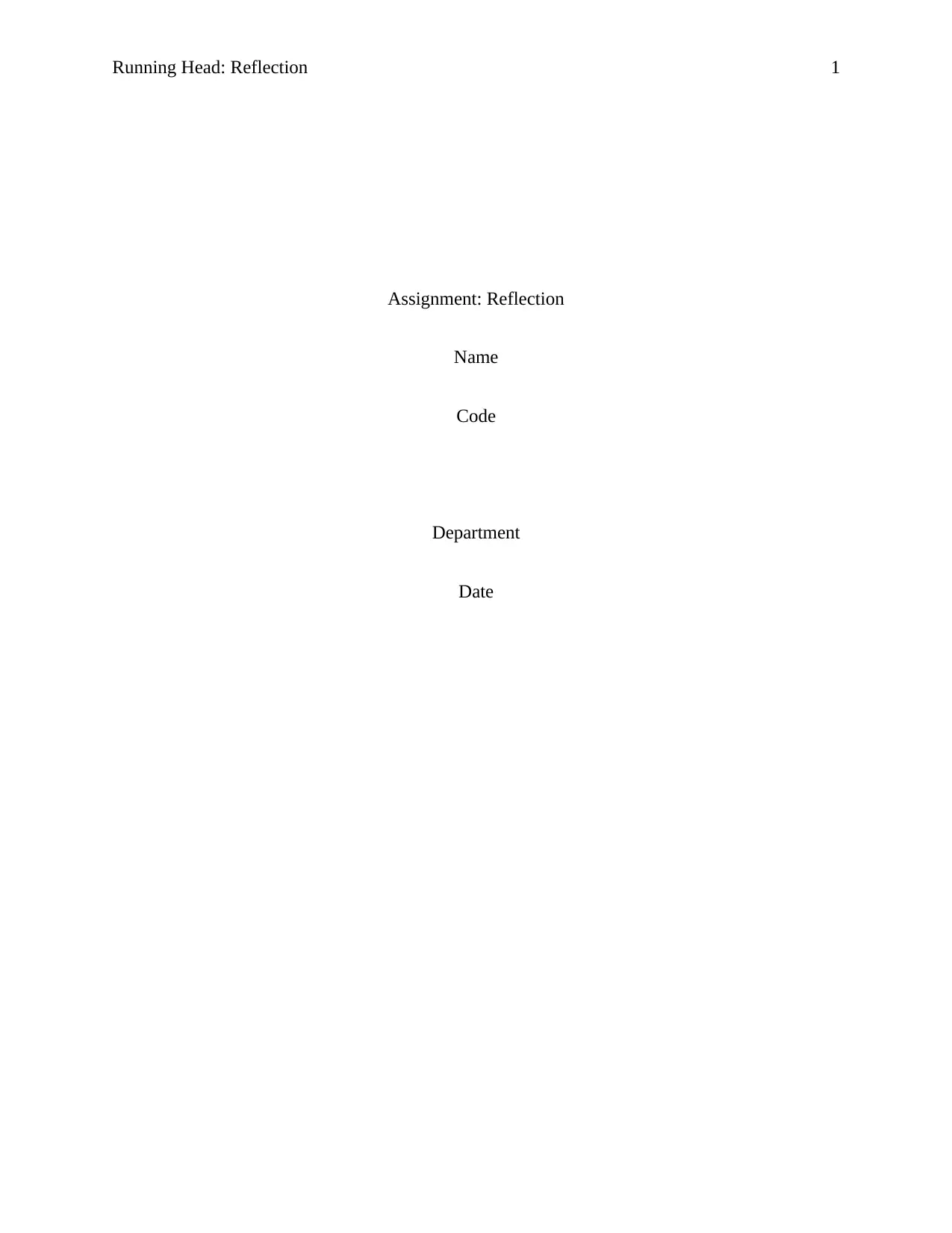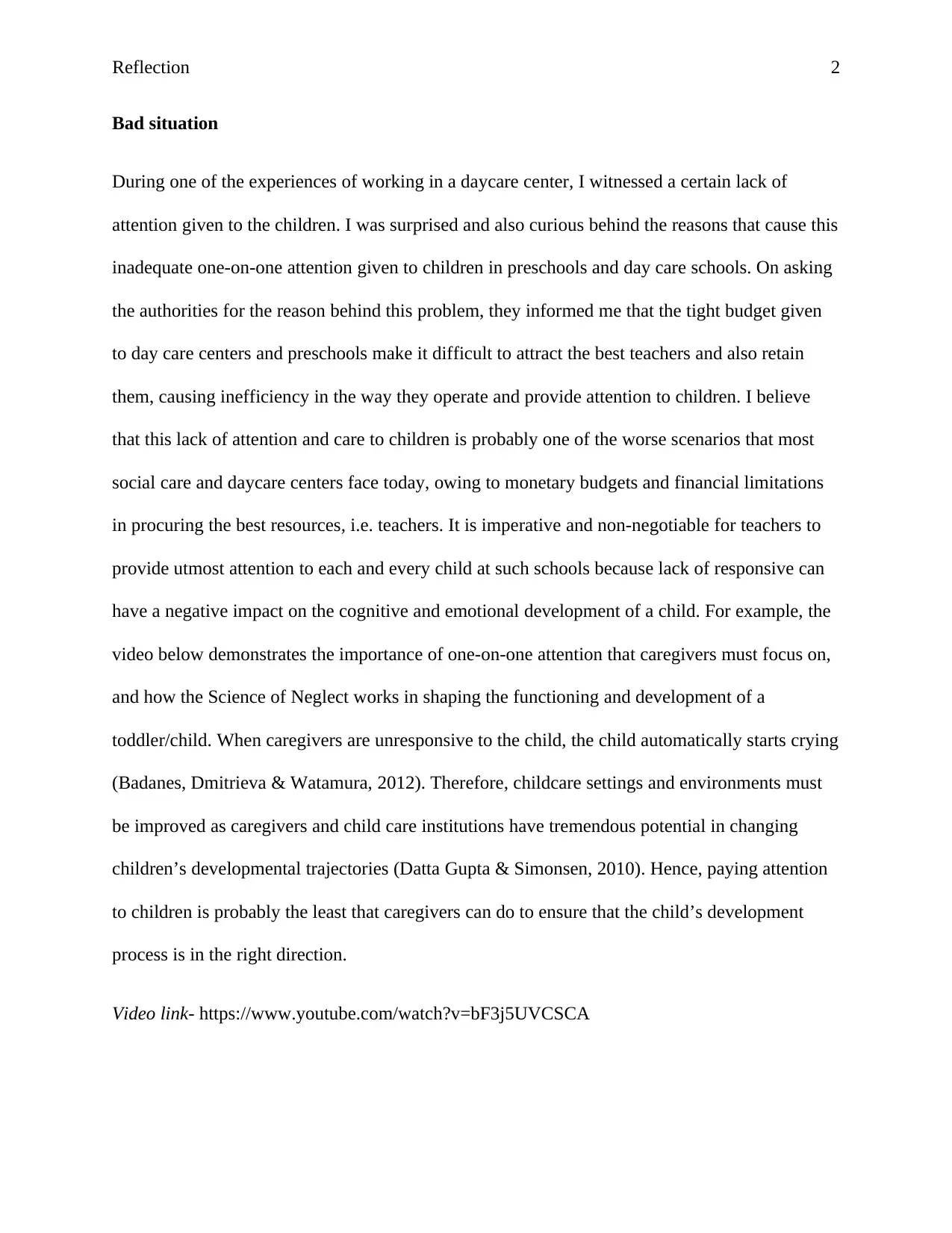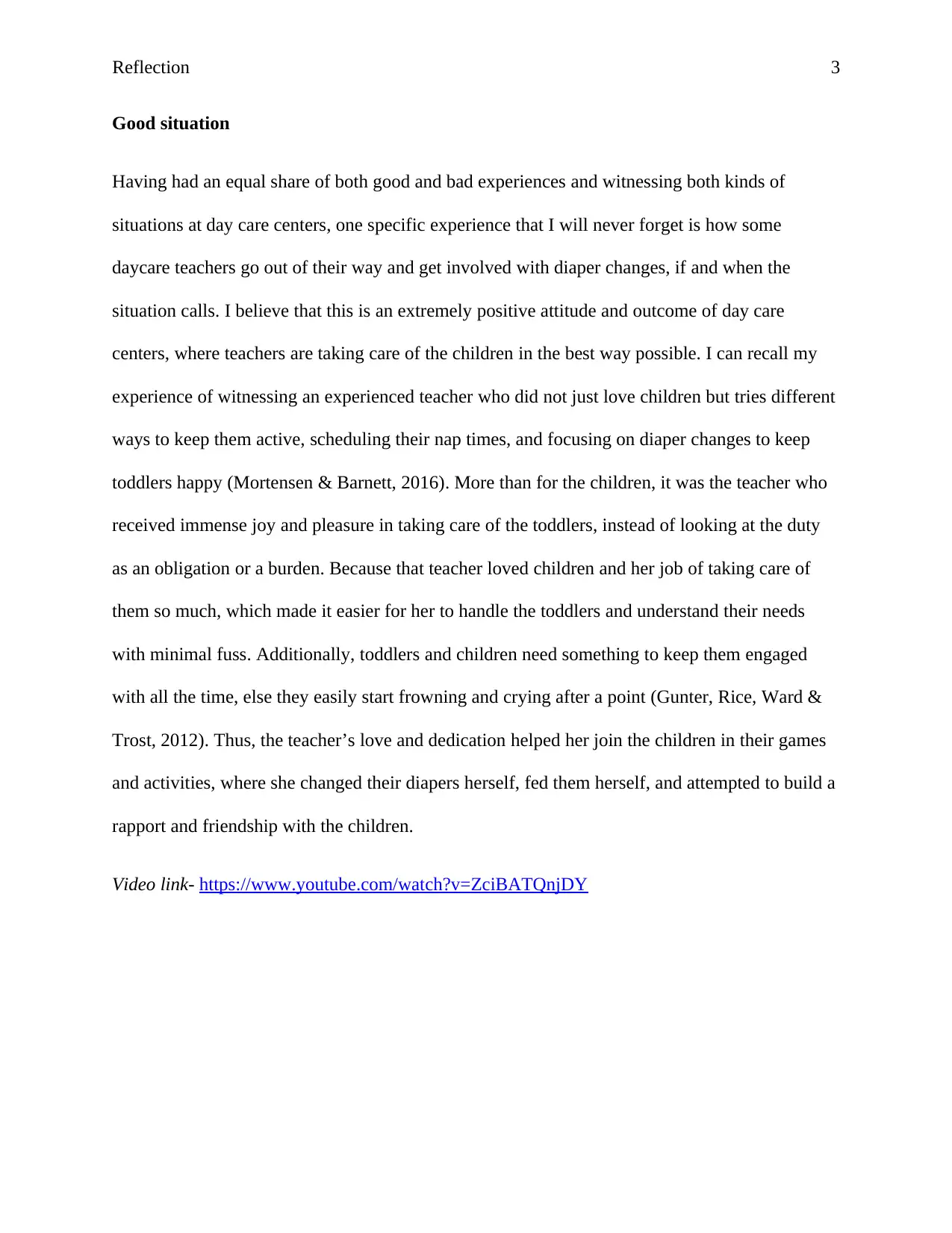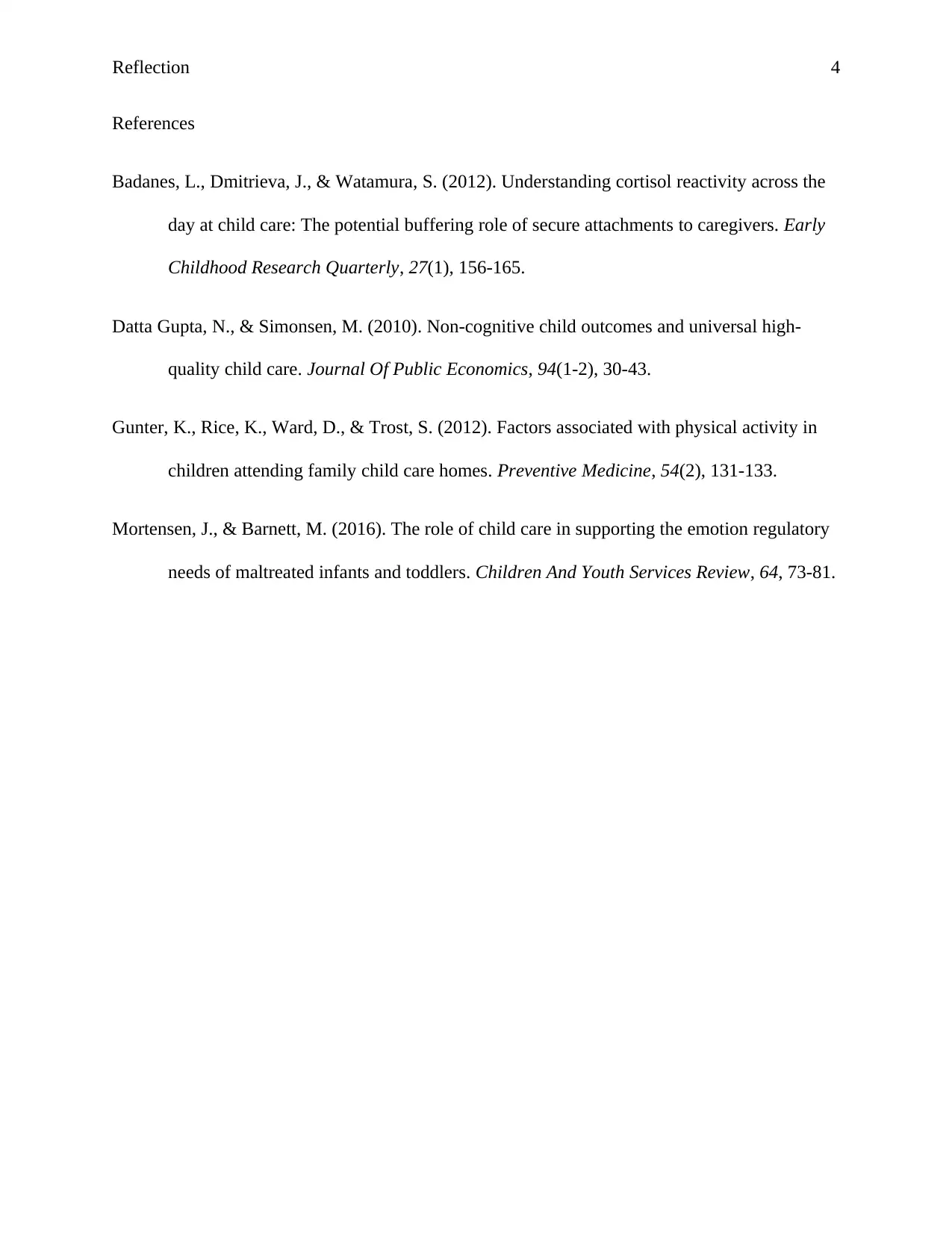Reflection on Daycare Experiences and Child Development: Education
VerifiedAdded on 2023/01/20
|4
|787
|59
Journal and Reflective Writing
AI Summary
This reflection assignment details the student's observations and reflections on experiences within a daycare center environment. The assignment contrasts two scenarios: a 'bad' situation highlighting insufficient attention due to budget constraints and the subsequent negative impact on children's cognitive and emotional development, referencing the 'Science of Neglect' video. The assignment emphasizes the importance of caregiver responsiveness and the potential of childcare settings to influence children's developmental trajectories. Conversely, the assignment presents a 'good' situation, depicting a teacher's dedication and positive interactions with children, including diaper changes and engaging activities, underscoring the joy and positive impact of attentive care on toddler well-being and development. The reflection incorporates video links and references to support the arguments, emphasizing the critical role of caregivers in shaping children's early experiences and development.
1 out of 4









![[object Object]](/_next/static/media/star-bottom.7253800d.svg)